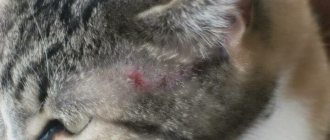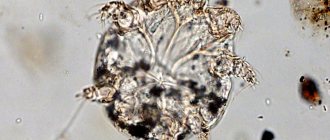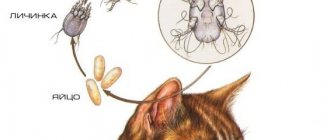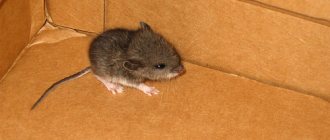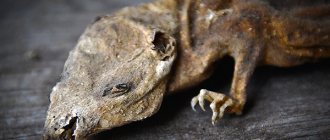Hunting instinct in cats
Despite their small size and very long stay as pets, cats remain predators. The ancestors of modern cats were good hunters, because this was the only way they could get food for themselves and their offspring, and therefore survive and raise their cubs. The hunting instinct remains one of the main ones in cats to this day. By the way, this is exactly what appears in a small kitten chasing a toy.
Hunting
The meaning of appearance and the main characteristics of a hunter
At first glance, it is very difficult to determine how good a cat is at catching mice. But experts have identified several signs that indicate a successful hunter:
- muscular body;
- strong paws;
- powerful jaws;
- the outline of the skull resembles a triangle;
- ears are high, with tassels;
- bushy mustache;
- variegated coloring;
- short hair.
In addition, the cat must be active and have a good appetite. It is clear that it is almost impossible to detect the totality of all signs in one cat. But it is precisely these qualities that you should pay attention to when choosing a kitten that will catch mice.
Character of Scottish Straight cats and cats
Scottish kittens are characterized by sedateness, independence and importance, at the same time they are active, inquisitive animals. They very quickly get used to a new place, among all the people living in the house
They immediately single out one person and unconditionally recognize him as a leader; a Scottish Straight cat will adore this person and follow on his heels. In the absence of people, he gets bored and always meets them at the doorstep, like a faithful dog.
With other family members, the Scots remain neutral and behave kindly; they are wary of strangers. They get along excellently with children, taking part in children's fun with pleasure. Kids, in turn, treat the charming teddy bears with delight and literally do not let go of the kitties.
However, parents should keep the situation under control, since straight-eared Scots cats cannot stand affection, squeezing, or being forced to be held in their arms, and when they break free, they can inadvertently scratch the child. They like much more to lie next to the owner, clinging to the person with their warm plush side. They rarely allow themselves to be petted and only when they want it.
Peace-loving, not at all touchy and unforgiving character, lack of aggressiveness make Scottish straight cats ideal companions for older people, and favorite pets for families with children (taking into account the points mentioned above about “cuddling”).
Straights easily find a common language with other animals living in the house: even with hamsters, even with dogs. They catch mice, and this “hunting” quality further increases the attractiveness of the breed.
Scottish Fold cats are not couch potatoes, unlike Persians, they are playful, but in moderation, they cannot be called too active, so you should not be afraid that in your absence they will cause disturbances in the house. They do not like heights and climbing curtains; exploring the wardrobes from above is not among their interests. Another thing is the inside of the closet, where a curious Scot will not hesitate to stick his charming nose.
Scottish Straight cats are not talkative; their meow can be heard extremely rarely, only if the animal is in pain or asks to be fed. More often they make peculiar sounds, reminiscent of creaking, or simply silently open their mouth.
Kittens quickly learn to use the toilet and scratching post. The last point is especially important, since straights have such a sin - they like to sharpen their claws on furniture or wallpaper.
Heredity and upbringing
Numerous studies prove that a kitten's hunting abilities are influenced not only by heredity, but also by upbringing. If the baby had free access to prey, and his mother taught him to catch mice, then he will become a good hunter, regardless of breed or lack thereof. Of course, if you add to this the need to get your own food, your abilities will develop even better.
Good heredity
And yet heredity is very important in the formation of real mousecatchers. If all ancestors caught mice, then most likely this skill will pass on to kittens. But the most important role is played by the mother, she is the one who helps babies develop the hunting instinct, turning it into a skill. The mousetrap cat begins to train kittens from an early age, and they adopt all her experience by about 4-5 months. So before this age you should not take the baby away from its mother.
How to raise and teach a cat to catch mice?
The future mouse catcher's hunting skills need to be developed from early childhood. Usually the mother does this. It all starts with the cat catching a live mouse and bringing it to the kids. Later, the kittens begin to hunt on their own, first under the supervision of their mother, then alone.
But you can try to teach your kitten to catch mice yourself. To do this, use active games, special toys, or another effective option - walks, during which the kitten can catch frogs, beetles or butterflies. Every time the baby catches prey, he should be praised.
It is very important to remember that you cannot force a cat to catch mice by starving it. The animal will weaken, become lethargic and will no longer have the time to hunt. There is a high probability that the cat will begin to climb through garbage dumps in search of food. But it is important not to overfeed the cat so that he remains active.
Production
If a cat has the makings, and the training has borne fruit, then pretty soon you can see your pet eating its first mouse.
Why do cats bring caught mice to their owners?
An interesting point is that a cat does not always eat caught mice. For many mustachios, the hunting process is much more important and interesting, and they prefer to eat their usual food. Quite often, strangled or slightly chewed rodents end up on the windowsill, on the threshold, or even by the bed of their beloved owners. There are several explanations for the fact that the cat did not eat the mouse, but brought it to the person:
- Many cats perceive people as clumsy creatures who lack even the most necessary skills. By bringing us prey, the pet shows concern so that its human does not die of hunger.
- The cat is proud of itself, hopes for recognition and praise, or wants to please its owner.
- The animal stores food for the future and believes that food will be safer in the house.
In any case, the appearance of a dead mouse in the house should be taken calmly, and the cat should be praised and thanked. You can throw away a gift only when the pet does not see it, otherwise resentment on his part cannot be avoided.
Who is better at catching mice - a cat or a cat?
Both male and female cats catch and eat mice. But females are considered the best hunters. They have a more developed hunting instinct, while males are more focused on finding a partner and procreation. A cat needs to provide food not only for itself, but also for its offspring.
A fairly popular question is which cats are better at catching mice - neutered or not. Castration does not affect the hunting instinct in any way, but as practice shows, it often affects the animal’s lifestyle. The cat becomes lazy and avoids any active actions, which naturally negatively affects his hunting abilities. Interestingly, the habits of a sterilized female usually do not change.
Characteristics of rat-catching cats
Felinologists (specialists in breeding cats) have identified the main signs by which one can judge how developed the hunting instinct is in an animal. These primarily include:
- Gender. The best rat catchers are cats. Cats do not have such an urgent need to provide food not only for themselves, but also for their offspring, so they do not cope so well with catching rodents.
- Head shape. The genes responsible for the hunter's instinct are in a linked state with the genes that determine the shape of the cat's skull. The shape of the head, indicating the great potential of a rat catcher, is triangular, closer to the oriental type.
- High ears with tassels at the ends and lush vibrissae (whiskers). The presence of these hairs and their sufficient development makes the animal able to track any rustle and vibration of the air, which is necessary for successful hunting.
- Variegated color. Monochrome animals are more noticeable, while tri-colored ones are “camouflaged” with fur.
Popular breeds of mousecatchers and ratcatchers
Among the variety of breeds, there are several whose representatives exhibit the qualities of excellent mousecatchers.
Maine Coon
Large and powerfully built, Maine Coons are considered one of the best mousecatchers. They run fast, jump well, and eagerly track prey for a long time. Maine Coons can easily tolerate cold and heat and enjoy spending a lot of time outside. In addition, thanks to their impressive size, cats of this breed successfully catch not only mice, but also large rats.
Maine Coon
Siberian
Another breed of excellent mousecatchers. Siberian cats are large animals, characterized by patience and restraint. They can move quickly and at the same time almost silently, and when they attack, they deftly plunge their claws into the prey the first time. Representatives of this breed are calm and do not become very attached to people; they love to spend time outdoors, feeling comfortable in any weather.
Kurilian Bobtail
Representatives of this breed grow quite large, the weight of a male can reach up to 10 kg, so they are suitable for catching rats. A distinctive feature is a short tail and long strong legs, thanks to which bobtails have excellent jumping ability. These cats are similar in character to dogs, so they catch mice primarily to protect the owner, as well as for his recognition and praise.
Nibelung
This breed originated in Great Britain. Its representatives are very independent from an early age, but are affectionate and sociable with their owners. But the Nibelungs do not welcome guests in the house, showing coldness and sometimes outright aggression towards them.
These sleek, medium-sized cats with large ears and silver fur love to hunt. The process captures all their attention, they deftly destroy mice both in the house and outside it.
Cymric
This breed includes medium-sized cats with a short tail. This is an active animal that needs space and long walks in the fresh air. An athletic build, long, tenacious legs and excellent coordination make the Cymric a natural mouser. They can also catch rats, with the exception of particularly large individuals.
British Shorthair
When figuring out which cats are better at catching mice, one cannot help but mention the aristocratic breed - the British Shorthair. The character of these animals is calm and friendly, they are agile and fast, and their hunting instinct is well developed.
The British prefer not to attack large rats, but they cope with mice and young rats very well. Very often, these cats bring prey to the owner, showing care and counting on a treat.
Russian blue
The Russian Blue is another aristocrat among mousecatchers. It is known that representatives of this breed were selected for catching mice in the residences of many royalty, in particular Peter the Great and Catherine II.
Russian blue
The Russian Blue cat is considered the standard in terms of reaction to a moving object. She moves quickly, silently, hitting the target exactly. These cats cannot be called affectionate and sociable, but they are sympathetic to people, very rarely showing aggression.
Siamese
Independent Siamese cats have long gained fame as excellent hunters. This ancient breed includes animals of medium size, with a lean body covered with short hair. Siamese are distinguished by their amazing reaction and speed. They can be aggressive when necessary, but under normal conditions they are very sociable, although they can show temper.
What cats catch mice and rats
Four-legged animals have always played an important role in human life, freeing living space from unpleasant and harmful rodents. Not a single new invention can compete with a cat in the fight against this evil.
So which cats are better at catching mice and rats? In the difficult post-war years, when Leningrad found itself under a rat siege, cats from Yaroslavl and Siberia, which were considered the best in the country, were brought to help the townspeople.
Modern methods of pest control do not always pay off. Special drugs cannot be placed anywhere ─ you can poison yourself, your household and neighbors. Many rodents have become more cunning and do not want to climb into mousetraps. One hope for four-legged animals.
When it comes to which cat catches mice, you need to keep in mind the following factors:
- You should definitely choose a cat, not a male cat. This may be due to the natural instinct to protect offspring, but it is the female species who take catching household pests more seriously;
- the head should be shaped like a triangle. This can be determined by pressing the hair on the head and ears to the skull;
- the ends of the ears are tassel-shaped;
- tricolored animals are considered the best rat catchers. It is best to purchase a pet with a black, gray and white color combination;
- presence of large ears. This is a sign of a special breed, and you can’t buy one cheaply.
Ordinary yard minxes are very suitable as mouse and rat hunters. Street life taught them how to get food.

